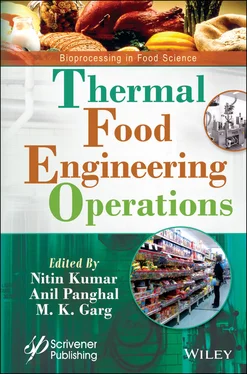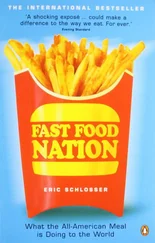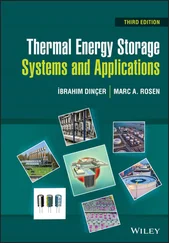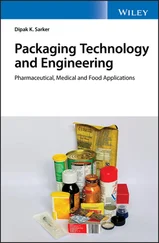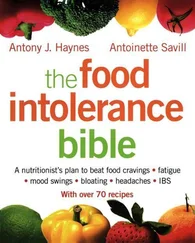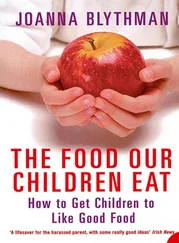NITIN KUMAR - Thermal Food Engineering Operations
Здесь есть возможность читать онлайн «NITIN KUMAR - Thermal Food Engineering Operations» — ознакомительный отрывок электронной книги совершенно бесплатно, а после прочтения отрывка купить полную версию. В некоторых случаях можно слушать аудио, скачать через торрент в формате fb2 и присутствует краткое содержание. Жанр: unrecognised, на английском языке. Описание произведения, (предисловие) а так же отзывы посетителей доступны на портале библиотеки ЛибКат.
- Название:Thermal Food Engineering Operations
- Автор:
- Жанр:
- Год:неизвестен
- ISBN:нет данных
- Рейтинг книги:5 / 5. Голосов: 1
-
Избранное:Добавить в избранное
- Отзывы:
-
Ваша оценка:
- 100
- 1
- 2
- 3
- 4
- 5
Thermal Food Engineering Operations: краткое содержание, описание и аннотация
Предлагаем к чтению аннотацию, описание, краткое содержание или предисловие (зависит от того, что написал сам автор книги «Thermal Food Engineering Operations»). Если вы не нашли необходимую информацию о книге — напишите в комментариях, мы постараемся отыскать её.
Presenting cutting-edge information on new and emerging food engineering processes,
, the first volume in the new series, “Bioprocessing in Food Science,” is an essential reference on the modeling, quality, safety, and technologies associated with food processing operations today.
This outstanding new volume:
Audience:
Thermal Food Engineering Operations — читать онлайн ознакомительный отрывок
Ниже представлен текст книги, разбитый по страницам. Система сохранения места последней прочитанной страницы, позволяет с удобством читать онлайн бесплатно книгу «Thermal Food Engineering Operations», без необходимости каждый раз заново искать на чём Вы остановились. Поставьте закладку, и сможете в любой момент перейти на страницу, на которой закончили чтение.
Интервал:
Закладка:
1.2.3 Preservation Process
The basic definition of food indicates that food is the materials, formulated or processed which are consumed orally by living organisms for development, pleasure, needs, and fulfillment. The chemical composition of food includes majorly water, fats, lipids, and carbohydrates with less amount of minerals and compounds containing organics. The different categories of food are perishable, synthetic, non-perishable, fresh, medical food, harvested, manufactured, preserved, and others. The preservation of food majorly depends on the type of food required to be produced and formulated. Preservation of food is defined as maintaining its properties at the desired level for long as possible. Safety with sustainability and innovation are the major aspects and priorities to ensure the preservation of food. In the modern era, the preservation of and processing of food not only includes the safety of the foods but also maintains sustainable innovation, economic feasibility, customer satisfaction, nutritional aspects, absence of chemical preservative, and should be environmental sound [62].
Food preservation is necessary for ensuring desired quality level, consumer satisfaction, to maintain preservation length and also to focus on the group for whom the products are to be preserved [10]. The reason for preservation also includes to form the value-added products, provide modifications in diet, and most importantly to overcome the improper planning in agricultural sectors. Preservation loss not only results in minor deterioration of food but also results in the transformation of the food to a severely toxic state.
After a certain period of time, the quality and characteristics of food may get deteriorated and become undesirable for consumption so it becomes the prime factor to study the rate of variations of quality attributes which indicates its shelf life; this is a very important parameter to consider. The quality of products can rely on appearance, yield, eating characteristics, microbial characteristics, and the consumer’s overall experience. The deterioration of food depends upon mechanical, chemical, physical, and microbial reactions. The quality of the product was maintained at every stage of food production and overall processing chains such as manufacture, storage, distribution, and sale. Additionally, the need for preservation must depend on its purpose and use, and consider the population for whom the preservation is to be done as the nutritional requirement and food restriction apply differently to different sections of groups.
There are many measures for food preservation; inhibition, inactivation, and avoiding recontamination are the common ones. Each method contains several processes of preservation such as inhibition, which includes a decrease of oxygen, adding preservatives, control of pH, freezing, drying, surface coating, gas removal, fermentation, and many others. Inactivation includes irradiation, sterilization, extrusion, and others; avoiding contamination involves packaging, hygienic processing, aseptic processing, and others.
Thermal technology has been the backbone of food production and preservation for many years. In this technology, the temperature is assumed to be the major parameter for preservation and processing mechanism to make food commercially sterile, i.e., to get rid of pathogens and microorganisms which usually grow in the normal shelf life of the food product. Thermally processing the food provides real importance to the food by increasing and preserving its shelf life longer than the chilled food processing technologies.
In novel thermal technologies, preservation is done by the use of electricity. Various forms of electrical energy are utilized for food preservation such as ohmic heating, high intensity pulsed electric field, high-voltage arc discharge, microwave heating, and low electric field stimulation. Ohmic heating is the most common and is based on volumetric heating which prevents the overheating of food, provides uniform and quick heating; it depends on the principle that generation of heat in the food is an outcome of electrical residence when an electric current is moved through the food product. Furthermore, ohmic heating prevents thermal damage and promotes the efficiency of energy. Similarly, microwave heating is also very common and utilized in almost every household and the food industry but its low penetration depth of microwave into solid provides thermal non-uniformity. The other available methods utilizing electric energy are also very versatile, useful, and efficient for the preservation of food. The current electro heating can be used to produce to form new and up-to-date products with diversified functionality.
1.3 Types of Thermal Technologies
Thermal processings are perhaps most essential in the food sector which has been used for the past many years; it has been discovered to increase the quality and shelf life of food with heat treatments. Thermal processing is the heating of foods at a particular temperature for a specified period of time. There are several techniques available in thermal technologies such as radiofrequency heating, ohmic heating, blanching, drying, frying, chilling, infrared heating, freezing and microwave heating, and extrusion. Combined high-pressure thermal treatment of food is also a very efficient prospect for the processing and preservation of food. The most common among them are microwave heating, ohmic heating, combined microwave vacuum-drying, radiofrequency processing, and new hybrid drying technologies.
Hybrid technologies are the recent development in engineering in the operation and design of the dryers to attain dried products with desired characteristics. In hybrid technologies, the drying technologies are combined with the new drying techniques to achieve a new age drying process to reduce energy consumption and enhance product quality. New age drying technologies would be very helpful for the bioproducts in agricultural sectors for all economic, environmental, and product quality aspects. Instant infusion is another new process for the heat treatment of food, depending upon the product requirement providing mild pasteurization and sterilization. For effective and efficient pasteurization and sterilization, the following are the needs: rapid and small heating time, accurate, and small residence time at sterilizing temperature, and rapid cooling time.
For examining the food when it goes under thermal process, nuclear magnetic resonance (NMR) and magnetic resonance imaging (MRI) can be used as they possess some unique properties for the same. Both of them can be used to investigate variation in the food during processing. Both of them are non-invasive and able to detect water mobility. NMR is the most versatile analytical technique used in modern times. It is capable of revealing complicated multivariate information inside the optically opaque and complex food matrix, also the thermal transformation in liquid, suspension, and gels regarding food samples. NMR and MRI are based on the magnetic properties of atomic nuclei and many elements have isotopes with such properties. Both of them are superior to any other instrumental methods because both are non-invasive, non-destructive, both measure volumes instead of surfaces, and are able to extract both physical and chemical information. By both techniques, it can extract knowledge about diffusion, flow, water distribution, and others. Furthermore, processes such as heating, freezing, hydration, dehydration, and salting can be detected and monitored non-invasively.
1.3.1 Infrared Heating
1.3.1.1 Principal and Mechanism
Infrared was discovered by William Herschel in the 1800s. Infrared depicted below red (infra: below); red is the longest wavelength of visible light. IR heating is the transmission of thermal energy in the form of electromagnetic waves. Wavelength between 0.7 and 1000 micrometer, wavelength larger than visible light but smaller than those of radio waves are the infrared waves. Three major types of infrared waves are [39]:
Читать дальшеИнтервал:
Закладка:
Похожие книги на «Thermal Food Engineering Operations»
Представляем Вашему вниманию похожие книги на «Thermal Food Engineering Operations» списком для выбора. Мы отобрали схожую по названию и смыслу литературу в надежде предоставить читателям больше вариантов отыскать новые, интересные, ещё непрочитанные произведения.
Обсуждение, отзывы о книге «Thermal Food Engineering Operations» и просто собственные мнения читателей. Оставьте ваши комментарии, напишите, что Вы думаете о произведении, его смысле или главных героях. Укажите что конкретно понравилось, а что нет, и почему Вы так считаете.
